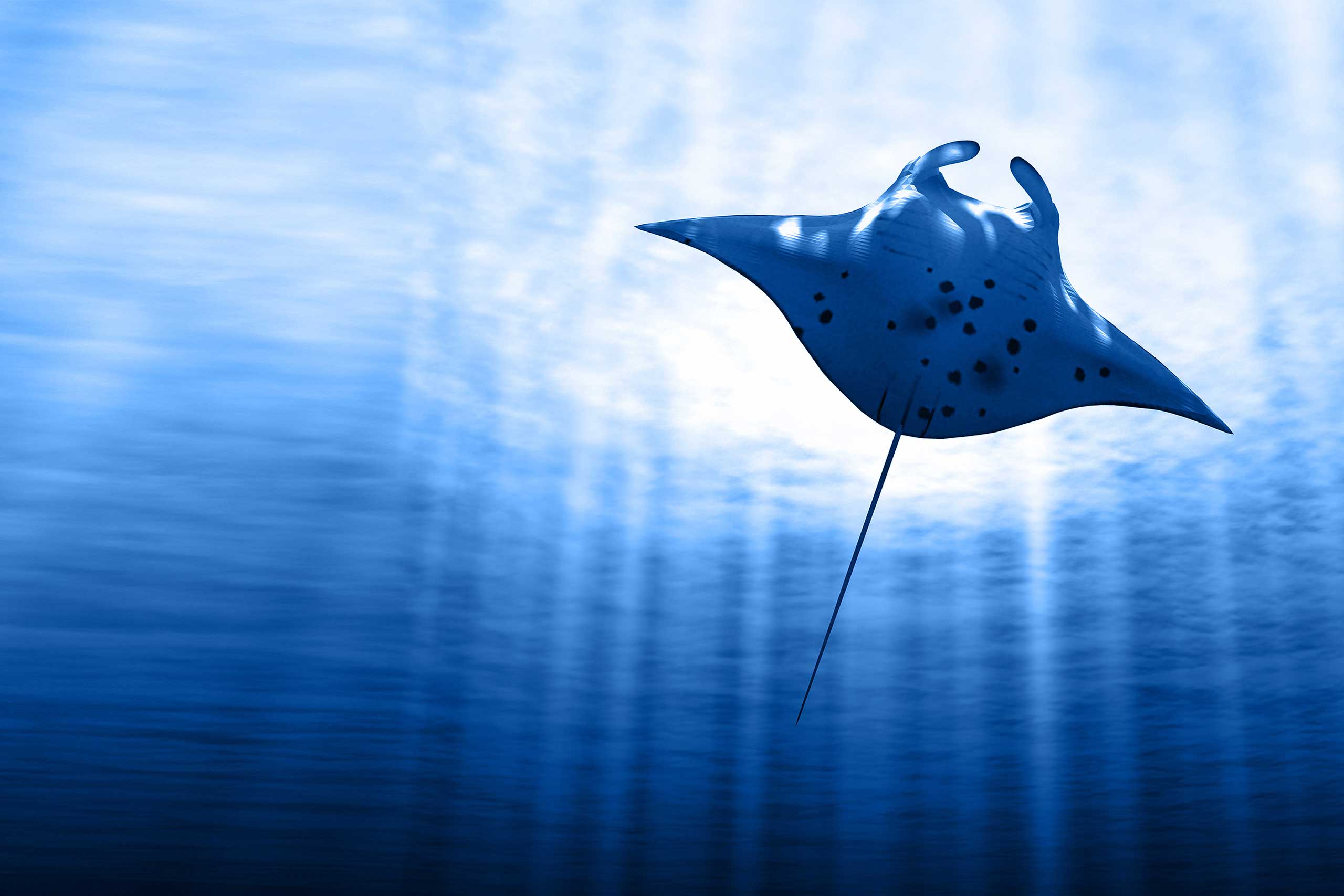About
Castle Rock is an exhilarating dive and one of Komodo National Park’s highlights. Located just north of Gili Lawa Laut, the top of this submerged seamount lies at a depth of 5 m. Large boulders and rocky outcrops resemble medieval fortifications, and have given the site its name. The dive begins with a negative entry from the boat and quick descent, especially when there is a strong current running. At 20-25m descending divers are frequently met by whitetip reef sharks and massive trevally. Deeper still, large grey reef sharks patrol the water, gracefully cruising along at the top of the food chain. Hawksbill turtles are regular visitors, but resident Napoleon wrasse, porcupine fish and scorpionfish may steal all the attention. Find a clear patch of rock on which to perch with your fingertips or reef hook, and watch the show. The clear water is filled with big schools of black surgeonfish, many different species of trevally, tuna, and luminous blue and yellow fusiliers, all conspiring to interrupt the great visibility. On the seamount itself watch out for sleeping whitetip reef sharks, blacktip reef sharks, and bamboo sharks. If you’ve had enough looking out into the blue at the “fish soup”, there are many delicate nudibranchs, crocodile fish, leaf scorpionfish, barramundi cod, and blue ribbon eels just waiting for the eagle eyed. The parapets at the top of the castle offer a natural place to make a safety stop sheltered from the current. Here curious moorish idols play and dance right in front of your mask, while you watch the action below from the vantage point of a king. Castle Rock is one of Komodo’s more advanced sites. Prior experience of diving in currents is recommended for maximum enjoyment and to avoid damaging the fragile environment.
Whitetip Reef
The whitetip reef shark (Triaenodon obesus) is a species of requiem shark, family Carcharhinidae, and the only member of its genus. A small shark usually not exceeding 1.6 m (5.2 ft) in length, this species is easily recognizable by its slender body and short but broad head, as well as tubular skin flaps beside the nostrils, oval eyes with vertical pupils, and white-tipped dorsal and caudal fins. One of the most common sharks found on Indo-Pacific coral reefs, the whitetip reef shark occurs as far west as South Africa and as far east as Central America. It is typically found on or near the bottom in clear water, at a depth of 8–40 m (26–131 ft). During the day, whitetip reef sharks spend much of their time resting inside caves. Unlike other requiem sharks, which rely on ram ventilation and must constantly swim to breathe, this shark can pump water over its gills and lie still on the bottom. At night, whitetip reef sharks emerge to hunt bony fishes, crustaceans, and octopus in groups, their elongate bodies allowing them to force their way into crevices and holes to extract hidden prey. Individuals may stay within a particular area of the reef for months to years, time and again returning to the same shelter. This species is viviparous, in which the developing embryos are sustained by a placental connection to their mother. One of the few sharks in which mating has been observed in the wild, receptive female whitetip reef sharks are followed by prospective males, which attempt to grasp her pectoral fin and maneuver the two of them into positions suitable for copulation. Females give birth to one to six pups every other year, after a gestation period of 10–13 months. Whitetip reef sharks are rarely aggressive towards humans, though they may investigate swimmers closely. However, spear fishers are at risk of being bitten by one attempting to steal their catch. This species is caught for food, though ciguatera poisoning resulting from its consumption has been reported. The IUCN has assessed the whitetip reef shark as Near Threatened, noting its numbers are dwindling due to increasing levels of unregulated fishing activity across its range. The slow reproductive rate and limited habitat preferences of this species renders its populations vulnerable to overfishing.
Bleaching
Bleaching occurs when corals expel their symbiotic zooxanthellae - pigmented, algae-like protozoa that live within the coral's cells. High temperature, pollution or other stresses can cause the coral to expel its zooxanthellae, leading to a lighter or complete loss of color.
Recent Activity
Irfan Thofiq Firdaus
conducted a manta survey. - at Komodo National Park
mantas at Castle Rock on 27 Aug
Found Tunas and GTs
Firmansyah Tawang
conducted a manta survey. - at Komodo National Park
mantas at Castle Rock on 28 Sep
ITFTNSVPRRU CR
CR
